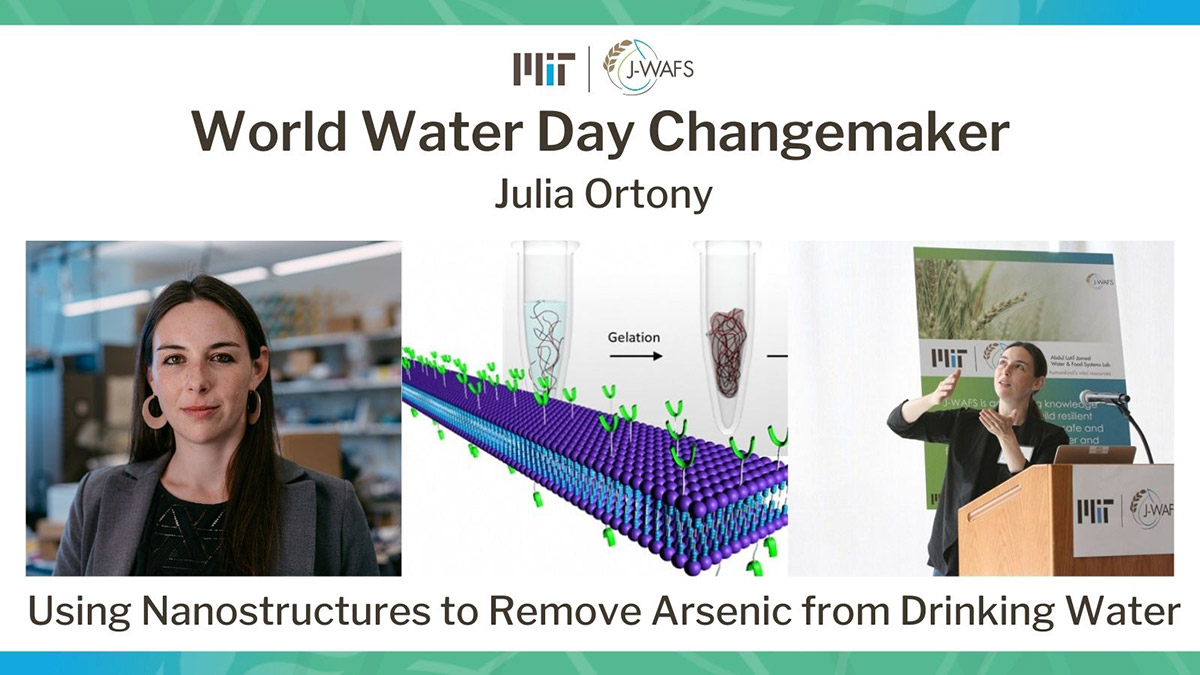News World Water Day 2022 Research Highlight: Filtering arsenic from drinking water in South Asia
Julia Ortony of Materials Science and Engineering manipulates molecules into nanofibers that can remove heavy metals from water.
Carolyn Blais, J-WAFS March 22, 2022

The Finmeccanica Career Development Professor in the Department of Materials Science and Engineering, Julia Ortony works on molecular nanomaterials for environmental contaminant remediation. Through a J-WAFS seed grant she and her lab worked to develop a robust, high surface-area material made of small molecules designed to sequester arsenic from drinking water.
Arsenic is found in water from hand-pumped, mostly shallow, tube wells across large parts of rural Bangladesh. Because of political, economic, and technological constraints in the region, not much has been done to truly solve the problem. People are therefore left to use filtration systems that use oxidation and adsorption through buckets filled with layers of sand, brick chips, iron filings, and gravel. But these systems are cumbersome, heavy, and require maintenance and space. Better approaches to arsenic remediation are needed, particularly the development of novel materials to enable the next generation of contemporary, inexpensive, lightweight, and compact filters.
Through the J-WAFS seed grant, Ortony and her lab were able to:
- Synthesize self-assembled small molecule nanoribbons that are stable in and outside of water and show unprecedented mechanical stability and robustness
- Demonstrate that the nanofibers are suitable for chelation of heavy metals, including removal of lead up to 1/10th of the nanofibers’ weights and nanofiber stability in extreme environmental conditions
"We’ve developed unique, molecular nanostructures that self-assemble, are stable in both water and air, and — since they’re so tiny — have extremely high surface areas.”
—Julia Ortony, materials science and engineering professor and J-WAFS PI
